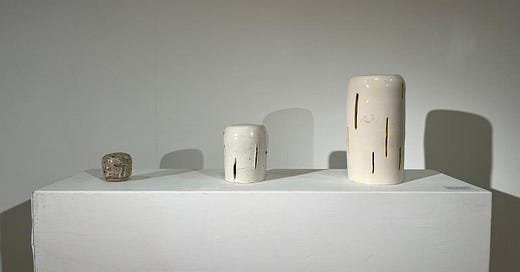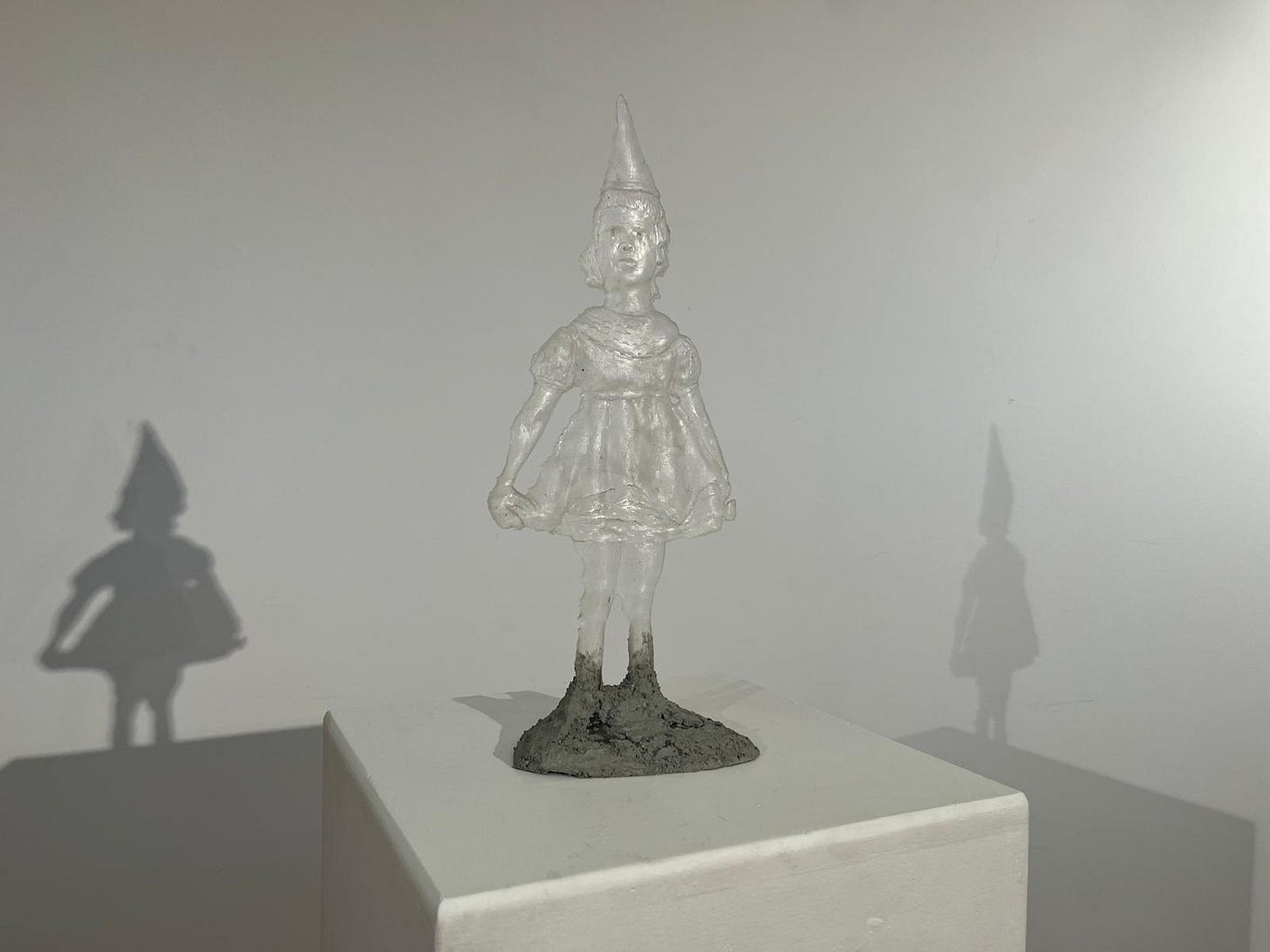Hope in the Cracks
Theological Reflections on Pam Foley's Exhibition
A few days ago I visited a fascinating exhibition by the artist Pam Foley at St John's College, Oxford. Foley, active as a sculptor and teacher for nearly 30 years, has developed deeply personal projects such as Routes of Sorrow. Now this exhibition includes a new section devoted to Hopefulness. In this post, I would like to share with you three pieces of art that particularly struck me.
These three art works, although different in form and materials, invite us to reflect on what it means to have hope in the midst of the fragility of life. Hope, as St. Paul reminds us, contains a promise that does not disappoint because it is founded on God's love for us: “Hope then does not disappoint, because God's love has been poured into our hearts through the Holy Spirit who has been given to us” (Rom. 5:5).
Let us see then how art can become a vehicle for this hope that comes from heaven.
Christ's Light in Fragile Vessels
These three ceramic vessels represent a dialogue between form and emptiness, fragility and strength. The cracks across the surface are not signs of breakage, but symbols of life. As in kintsugi, the Japanese art of repairing objects with gold, here too we find a metaphor for redemption: our wounds can become a source of beauty and grace. Jesus himself, after the resurrection, shows his wounds as a sign of a love capable of overcoming even the darkness of death.
Each of us, in our own journey of growth, is called to dig glimpses into the armor we often wear to defend ourselves from life. Even the wounds that our history may give us can become loopholes to let in the light we need; the light that can only come by opening ourselves to the love of the Other.
Resilience in Fragility
This glass sculpture portrays a young figure standing with an air of tranquility and confidence. The glass, with its fragility and transparency, speaks to us of a hope that relies completely on divine light. Jesus invites us to be “the light of the world” (Mt. 5:14), a light that is not hidden, but shines through us, just as this figure conveys the light that shines through it.
At the same time, the fragility of glass reminds us that ours is 'a treasure in vessels of clay' (2 Cor. 4:7). Given the precariousness of our existence, being resilient means being firmly planted with our feet on the ground, as we see in this sculpture whose feet are even cemented to the ground. Only from this simple, honest and genuinely down to earth point of view, can we open ourselves to the strength that comes from God that alone can give us the strength to hope for heaven.
Signs of Grace in the Everyday
This wall panel reminds us that hope can grow even in the cracks of life. The plants that creep between the bricks, the colourful lettering that emerges from the rough texture, tell us of a joy that will not be stifled.
Even in the most desolate walls, life finds a way to manifest itself, just as hope finds a place in even the most broken hearts. Sometimes all it takes is just to scratch the surface of the walls that separate us from others to find an unexpected hint of joy, that perhaps we had even forgotten we could feel.
Conclusion: Transformative Hope
These works remind us that hope is not a superficial feeling, but a transformative force that invites us to see grace in our fragility. Through the beauty of art, we are called to contemplate the promise of a redemption that transforms our cracks and shadows into testimonies of grace and light. And thus, can hope bloom.
Pictures by Giovanni Castellano






